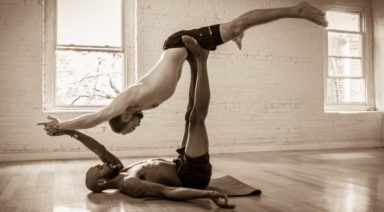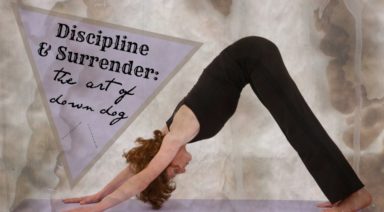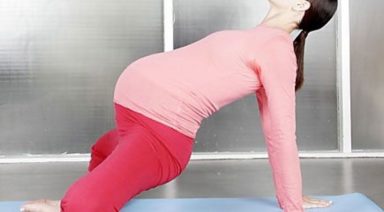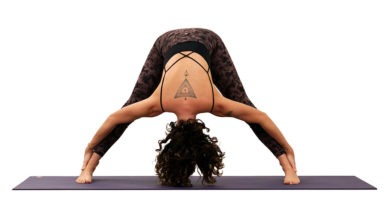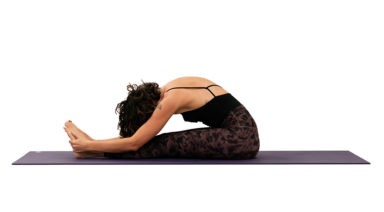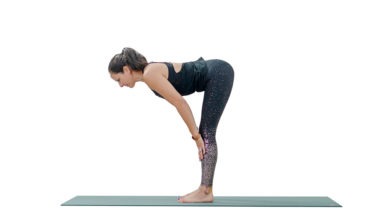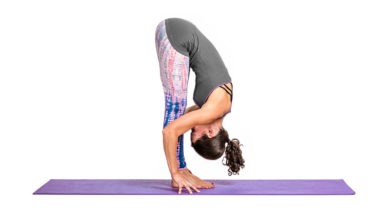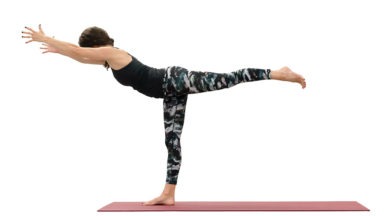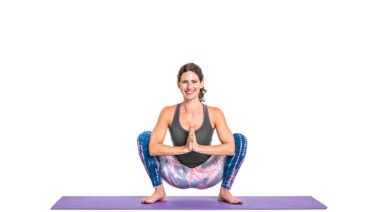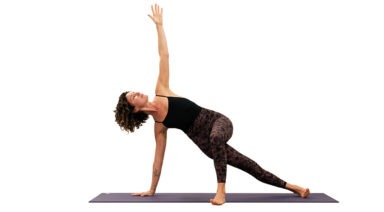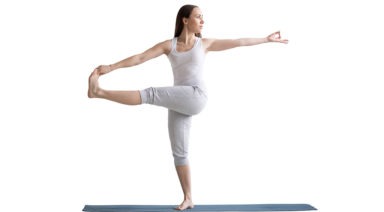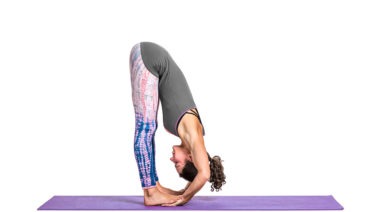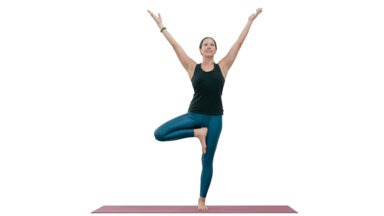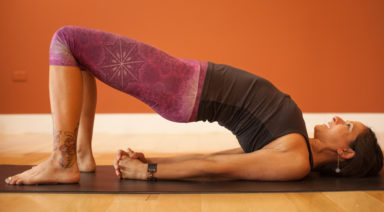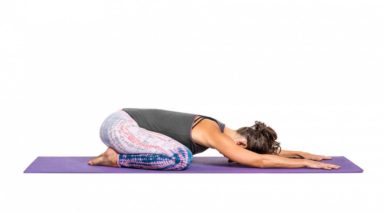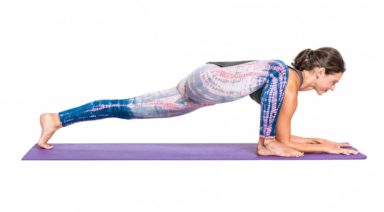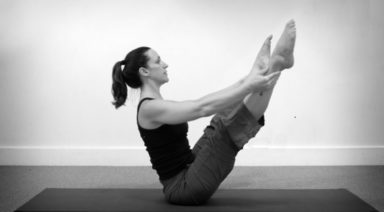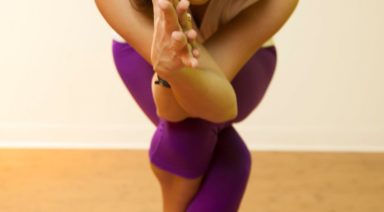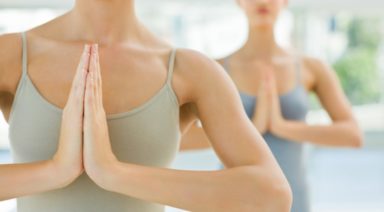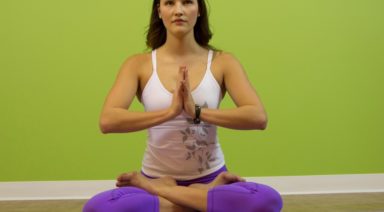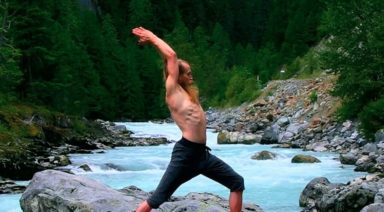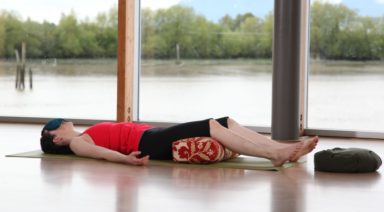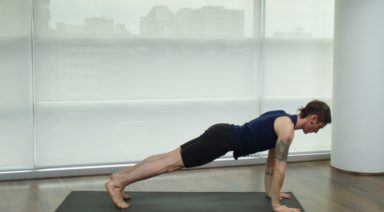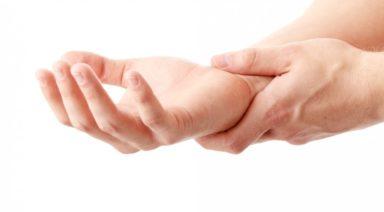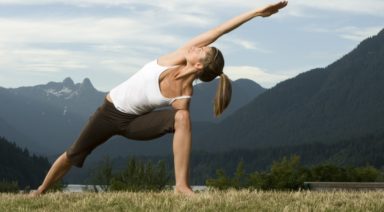High Blood Pressure and Inversions

The practice of Yoga poses (Hatha Yoga) offers tremendous health and wellness benefits, but certain health conditions require important modifications and omissions of specific asanas. High blood pressure is a serious health condition that generates many possible contraindications especially in Yoga postures that invert the head below the level of the heart.
High blood pressure (or hypertension) is the occurrence of abnormally high arterial blood pressure at resting state. High blood pressure can result from a variety of factors but is commonly associated with atherosclerosis (a common arterial disease in which raised areas degeneration and cholesterol deposits form on the inner surfaces of the arteries), poor dietary habits, lack of physical activity, and high proportions of body fat.
High blood pressure is a result of arteries having poor blood flow. This resistance to flow requires the heart to pump more vigorously in order to circulate the blood (oxygen and nutrients) to all the cells of the body. This extra effort placed on the heart has a wearing effect on heart tissues and places a greater amount of fluid pressure against the walls of blood vessels.
How Does High Blood Pressure Affect Yoga Poses?
When we invert the body such that the head is below the level of the heart, there is a tendency for blood to pool into the head. This pooling of blood into the head greatly increases when one also elevates the lower body and legs above the level of the head. When we do Yoga poses and other forms of exercise, there is an increased demand for oxygen by muscle cells.
The way that the body meets this increased demand for oxygen is by increasing heart rate and blood flow. So if we invert or place the head below heart-level during Yoga poses and other exercises, not only is there a pooling of blood in the head, there is elevated blood flow and pressure coming into the cranial region.
Normally, the body is adapted to handle blood pooling and mild pressure in cranial blood vessels. But if one already has elevated blood pressure at resting states, the sudden inversions in Yoga can add to the elevated blood pressure, thus generating pressure that is enough to damage delicate blood vessels in the brain. In severe cases, high blood pressure combined with inversions may cause blood vessels to hemorrhage.
Another area of awareness required, when high blood pressure is present, is the process of breathing. When one holds the breath while doing heavy exertion, blood pressure dramatically increases. This contraindicating effect is called the Valsava Maneuver. Many people are familiar with hearing fitness trainers saying “breath out” during the exertion stage of an exercise repetition.
Again, this breathing pattern not only keeps a steady flow of oxygen moving to the tissues but also has physiological benefits in preventing negative pressure occurring in heart and brain tissues. Therefore, when one has high blood pressure, holding the breath in Yoga poses or holding the breath in specific pranayama (breathing exercises) should be avoided.
If you have concerns about having high blood pressure, consult your physician. If you are diagnosed with high blood pressure, make certain you tell every Yoga teacher with whom you practice. Your Yoga teacher can then offer the appropriate modifications and variations in Yoga postures and pranayama.
Poses to Avoid When One Has High Blood Pressure
In simple terms, avoid Yoga poses that position the head below heart level especially when the practice or pose is vigorous. Here are examples of complete and partial inversions:
- Salamba Sarvangasana (Shoulder stand)
- Shirshasana (Head Stand)
- Adho Mukha Svanasana (Downward-facing Dog)
- Setu Bandhasana (Bridge or Spinal Lift pose)
- Uttanasana (Standing Forward Bend)
- Prasarita Padottanasana (Wide Leg Standing Forward Bend)
Having high blood pressure should not prevent one from doing Yoga. By understanding the degree of the health condition and by following the recommendations of physicians, one can still have a fulfilling Yoga practice with a wide range of Yoga poses.
Partner Yoga Poses: The Power of Connectivity
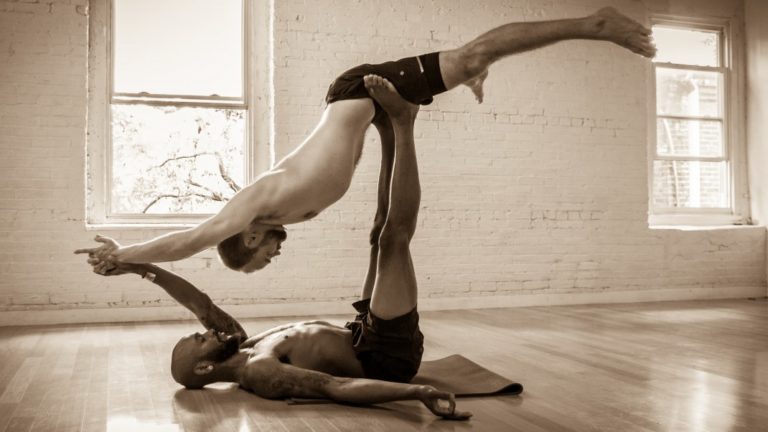
Want to heighten your yoga experience? Deepen your practice through body and mind with partner yoga: Partner Yoga Level One and Partner Yoga Level Two, led by instructor Pedro Franco, are perfect for yoga lovers. Partner yoga is a practice for any level of yogi. It can be done with a friend, loved one or acquaintance. Through this fun and connected series, you will learn to strengthen and amplify your practice by creating a greater sense of awareness in your own body while also paying close attention to the presence and movements of your partner. Partner yoga poses are great if you want to try something new or to spice things up in your relationship with more intimate couples yoga poses.
Things to Keep in Mind When You Start Your Partner Practice
- Partner yoga does not have to be complicated to be beneficial
- Partner yoga can simply be sitting back-to-back with your partner and breathing. It can be meditative. It can be as simple as massaging your partner’s sacrum after a stretch or wiggling your partner’s legs after a flying pose
- Partner yoga works on the same principles as individual yoga: Listen to your body and do what feels right. Challenge yourself, but only to a healthy limit
- If you’re new to partner yoga, take time to build strength, stability and flexibility in order to grow in the practice. Remember that in any form of yoga, there is no competition. For as many times as you stumble, you have just as many opportunities to try again. It is the act of connecting that matters most, not reaching a pose
Start with a Simple Partner Yoga Pose
Partner yoga can be a challenge for even the most advanced practitioner: It doesn’t matter how many hours you have spent on your mat, how many downward dogs or side crows you have done in your life. Maybe you are focused and resilient but need to work on your strength. Maybe you are strong and advanced in your movements but need to work on the act of giving yourself to your partner in a selfless manner.
Partner Seated Spinal Twist (Janu Sirsasana)
-
Begin by sitting back-to back in a comfortable cross-legged seated position
-
Each partner places their right hand on the other’s partner’s left thigh just above knee
-
Put your left hand on your own right knee
-
Coordinate your breathing by lengthening through spine on each inhale
-
During each exhale, twist a little more
-
Come back to center seated and repeat on other side
Learn the Art of Balancing with Your Partner
Partner yoga is not just about you. It is about the other person, too. Partner yoga poses exist to teach yogis and anyone interested in the practice how to gain better awareness and alignment of the body through precise adjustments and articulated movements.
Partner Boat Pose (Navasana)

-
Start by having each partner sit at the end of the mat facing each other
-
Each partner will bend their knees and press the soles of their feet together
-
Connect by clasping each other’s hands
-
While keeping the soles of your feet together, lean back slowly
-
Lengthen your legs and reach your feet upward to a bent-legged boat pose
-
Continue to breathe while you work on your balance
Create Greater Intimacy with Your Partner
Partner yoga can be as intimate as you allow it to be. Partner yoga is for anyone and everyone. It is about trust. It is about connection. It is about feeling the electric sensation between you and another person. It has the power to strengthen bonds between friends, unite strangers and fuse couples together in a new and stimulating way. Partner yoga has the powerful ability to create a profound level of intimacy between two people. The combination of breath, balance, trust and connection create for a unity that is unlike any other. It is assumed by many that partner yoga is purely sexual. This is not true. Yes, partner yoga can be a sensual experience if you want it to be, especially in couples yoga poses. It can also be an experience of unity in a completely different way. It can be whatever you want it to be. That is the beauty of the practice.
Partner Dancer’s Pose (Nataranjasana)

-
Start by standing up toward the back edge of your mat, facing your partner
-
Grab your partner’s right hand
-
Each partner will slightly bend the knees
-
Shift your weight onto your right leg
-
Bend the left knee and gran onto the inside of the left ankle or calf with your left hand
-
Gently pressing your shin into your left hand, open your back
-
Finally, reach your right arm up to balance
-
Repeat on the other side
Connect with Your Partner
Partner yoga is not just about you. Partner yoga has the word partner in it for a reason. It is a practice for two and is a practice that focuses on the unity of two. This is the idea that we should be incorporating in our partner yoga practice. Listen to your partner’s needs. Are they comfortable? Do they feel supported? Do they feel capable of holding you in a pose? Are they calm and present? Through the power of breath and touch, you will be able to sense your partner’s physical and emotional state. Yes, you need a partner to fly. You need a partner to pull your legs and lift you up. But your partner also needs you. It all comes back to unity. In these partner yoga poses and couples yoga poses, we rely on each other and so we must move in a way that represents that.
Double Standing Forward Bend (Uttanasana)
-
Stand back-to-back with your partner
-
Leave about 6 to 12 inches between you and your partner’s heels
-
Each partner will bend at the waist and come to a forward fold
-
Reach your hands behind you
-
Grab onto your partner’s hands
-
As you increase flexibility, you may be able to grab your partner’s forearms, elbows or even shoulders
-
Walk your heels closer until your bottoms are touching and straighten your legs
-
Lengthen the spine, head dangling toward the ground
Explore AcroYoga
AcroYoga is the combination of yoga, massage and acrobatics. As with partner yoga, which often includes acrobatic poses, shown in the Partner Yoga Level Two video, it is important to focus on the building blocks of your practice. Start with what you know and allow yourself to grow through continual practice, one step at a time. Motivation and repetition are the keys to helping you excel at AcroYoga. A common misconception about AcroYoga is that the size of your partner matters. This is not always true. Believe it or not, you have the ability to lift someone twice your weight. It is all about your technique.
As an extension of partner yoga, AcroYoga relies on the same principles: trust, communication and connection. Once you master these skills, you will be flying in the air and lifting people up with your feet in no time. Here is a fun beginner’s partner AcroYoga pose to test out your skills.
Flying Plank (A)
-
Base lies on back
-
Base places legs up in the air, heels over hips
-
Flyer starts by standing facing the base, with their toes almost touching the base’s glutes
-
Base bents knees slightly to bring feet to the hipbones of the flyer
-
Base and flyer connect hands, palm to palm and fingers interlaced
-
Flyer leans forward into the base’s feet
-
With flyer’s body in a single line, the base will receive the weight of the flyer in their feet
-
Base will then straighten their legs and stack their heels directly over the flyer’s hips
-
The flyer should have an engaged core, and the base should have straight arms and shoulder blades firmly grounded into the mat for maximum support and balance
From Flying Plank, yogis can work into the variation below: the flyer leans into the base’s hands instead of feet.

Flying plank photo credit: Amy Goalen
Just as we protect our family, friends and loved ones, we must protect each other when practicing partner yoga. Emotionally and physically, we must rely on each other to reach the ultimate goal of unity and connection.
Thank you to Amy Goalen for providing the beautiful main article image!


